Workforce management is how you ensure your workforce is being productive. Whether it’s through data collection, training, human resources, or other types of processes within the office infrastructure and beyond, workforce management is meant to maximize the competency of your organization. Of course, there’s an ever-changing face of workforce management, in part because so many singular processes can be grouped underneath this one umbrella.
There was already an estimated 10-year outlook for what workforce management may look like over the next few years, well before the COVID-19 pandemic occurred. While the aftershock effects of the pandemic may slightly alter course, expect the way you analyze and manage your workforce to be similar to the original forecast. Digital and AI choices will grow in a way like never before, and how we work and communicate with our colleagues will change. Read on to learn about six emerging ways that workforce management is changing.
Smaller and Flexible Teams
You’ll see less of large, thrown-together, ad hoc types of teams — which often encompass the entire workforce or an entire department — in order to focus on a task at hand, in exchange for smaller and more flexible teams that are intricately designed toward a singular purpose. Experts at Gartner coin this a “We Working” philosophy and expect it to be a common thread over the next decade. You’ll see shrinkage of middle management, something that chief human resource officers (CHROs) need to be aware of and prepared for. These types of flexible teams are not static; while they work closely together and are intensely focused, as soon as the task is completed, the group is disbanded and new teams are formed. These teams should be autonomous and should run without the need for managerial supervision unless they have a particular question. They should be efficient, speedy, and focused. Ideally, you should be running analytics, such as human capital management (HCM) technologies, to determine assignments as well as understanding your team’s talents and their drawbacks.
Digital Skills in High Demand
Digital skills have been a necessity in the office environment for decades, but they need to close skill gaps or to add more proficiencies is imperative as workforce management changes over the next several years. Digital upskilling will become a necessity, and in many cases, so will post-grad education, especially for HR specialists. Gartner claims that the need for digital skills has grown by 60 percent over the last several years and is expected to keep growing. In a 2019 survey, 80 percent of employees said that they didn’t have the skills they needed for their current job or their future careers. It can be difficult for an employee to know where to go for continuous learning, and HR leaders can help point them in the right direction. One of the benefits of having smaller, more flexible teams work as a unit is the opportunity to work with others who may be more proficient in a particular skill. In addition, HR needs to provide a continuous learning environment that keeps everyone up to speed, with the inclusion of non-traditional programs such as consumerized learning.
A More Social Digital Front
Expect to have the ability to partner globally with anyone and to be able to talk in real-time without a translator or language barrier. This type of ease of communication will speed up any type of production, regardless of the nature of your industry, and maximize efficiency. Language translation software is expected to be error-free over the next coming years, allowing you to talk or type freely to your team member, who may be across the room or around the world, without loss of meaning. This allows companies to build better communities around the world and essentially build trust. It can be very difficult to have a meaningful conversation when your translation software is slightly off, you’re using a translator or you only know a little of the language. Having flow is important.
There are other ways the social digital front will be affected, such as avatars and rating systems. Expect to see business social platforms where people talk to one another but are able to leave feedback and ratings, similar to the feedback one may leave on an auction website, or on an internet marketplace after an item is bought. Ratings will be based on ethics, competence, and trust — it’s important to know who you’re doing business with.
Smart Computing Becomes More Smart
Expect smart machines — everything from your smartphone to how you use artificial intelligence (AI) — to become “more smart.” Smart becomes more human when more users use smart technology. For instance, every time you use something such as a search engine (which is considered artificial intelligence), it’s tracking your activity. But instead of spying on you, it’s tracking your search habits to get to know you better to make the engine more useful to you. So, if you’re using a search engine, such as Google, for work, over time it’s going to have a precise algorithm connected to your searches, which in theory will help you become more proficient and productive in your work tasks.
However, there will also be more automation within the shift to smarter machines. You may see AI integrated directly into your software, tools, and analytics in order to boost productivity. Within the next 10 years, there is even a distinct possibility of having robots at the office. AI in the workplace and other types of smart software is not meant to take over the human element, but instead, help you so that you can perform your job better.
The Lasting Impact of COVID-19
It would be unwise to deny the lasting impact of COVID-19 and how it will affect workforce management going forward in a post-COVID office. While the landscape of workforce management will change forever, that doesn’t mean it’s impossible to regroup, adapt, and adjust. If you’re leading a team of people, now is the time to offer support and motivation.
Employers, employees, and teams will need to adapt to a relearning mindset. Part of the problem with a pandemic is the uncertainty of the future, so everyone needs to be flexible enough to adapt and reskill or upskill — and quickly. The sudden shock of COVID-19 affected not only employees, but employers as well, so C-level executives may have to accept a shift in management in the interim as everyone adapts to a changing workforce. A change in leadership does not equate to a loss of a job, but it does mean you must go where your skills are needed most.
While aesthetically a post-COVID office may employ an open-space concept with rental office furniture, from a human and HR standpoint, the office concepts should be openness, transparency, and trust. HR is being more open and transparent with employees than ever before, and this is a change that may stick as we move forward. “We’re all in this together” is a motto that many people took quite seriously. Going forward, agile, flexible workspaces will be a norm as employees return to work, and there will be less of an office hierarchy from a design standpoint, which offers a more comfortable office space to work in.
Social Impact and Well-Being
When traumatic events happen, such as a global health threat, it’s only natural for humans to think about their purpose and their contribution to society. Sustainability and reducing our carbon footprint has been a concern long before COVID-19, as has been searching for purpose in one’s work. Look for a shift toward a search for social impact and value of work within one’s employment, as employees begin to search for purpose within their career. HR can support this by engaging and supporting their employees, offering initiatives for socially meaningful work.
Employers will also trend toward placing a higher value on their employees’ well-being. Look forward to seeing more health-centered programs in place, such as those concerned with eating a healthy diet, getting enough exercise, quitting bad habits such as smoking, and having a good work-life balance. Many employees will still be working remotely or will be working in a hybrid situation, such as working partially from home and partially in the office and may be struggling to reach a good balance. Expect HR to check in with employees, just to ensure that they’re comfortable with their current work setup. To some, working from home is comfortable and more productive, but for others, it can be unhealthy. Maintaining good health has been shown to be of benefit when fighting viruses, such as COVID-19.
As you’re returning to the office, you want sustainable, versatile furniture that is tailored to your specific needs. CORT Furniture Rental can help. With complete workspaces, movable office furniture, space planning, and more, we can help with recreating your office.





